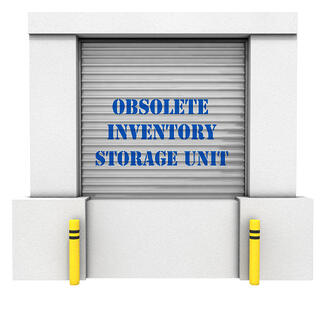Obsolete inventory can be costly for your business. When is the last time you took a good inventory of all your supplies? If you were to walk through your warehouse today, would you find things laying around that are unusable? Would you find things that no one would buy? Or maybe, you would find some things that were broken and just tossed in a corner for repair that were never repaired. These things are considered obsolete inventory.
What constitutes inventory as obsolete?
 Old inventory becomes obsolete when newer products become available. For example; lf you’re in the appliance business and 5 years ago a refrigerator that was frost free and being able to get water from the front of you refrigerator were big selling features. Somehow a couple of them were pushed to the back of the line as the newer models were delivered. Now days the frost free and water features are standard features. The new selling point is now all the digital things that tell you when you’re out of an item, etc. The changes in the features will often adversely affect the value of your existing inventory.
Old inventory becomes obsolete when newer products become available. For example; lf you’re in the appliance business and 5 years ago a refrigerator that was frost free and being able to get water from the front of you refrigerator were big selling features. Somehow a couple of them were pushed to the back of the line as the newer models were delivered. Now days the frost free and water features are standard features. The new selling point is now all the digital things that tell you when you’re out of an item, etc. The changes in the features will often adversely affect the value of your existing inventory.
You can ask any computer store and they will tell you that technological advances are a double-edged sword. It’s been said that your computer is obsolete before you even get it home! Of course there are always updates and new programs to add. But a once again, changes in the features will often adversely affect the value of your existing inventory.
How does carrying obsolete products increase your operating cost without generating a profit?
Not only do you have the cost of storing and insuring these items, you may have to pay someone to move them to a different storage location to make room for new items. If inventory is a major item on your balance sheet, your financial reports may overstate your business assets as these things would be counted in inventory. Your taxes may also be affected if you fail to recognize the expense of obsolete inventory, by overstating your net income.
How to reduce the cost of excess inventory?
* Be proactive. If an item hasn't sold after a certain time or is being phased out by suppliers, start offering sales discounts.
* Be willing to write off products or raw materials that are unlikely to generate profit. Don't wait until escalating storage costs or an auditor shines a spotlight on obsolete inventory.
* Establish a regular schedule for reviewing inventory. Many firms only count their goods at the end of the year. But knowing where you stand with inventory should be a year-round process.
For further assistance in how to make your business more profitable and perhaps save on your tax bill too, contact our office at (260) 497-9761.
.png?width=120&height=77&name=Summit-Virtual-CFO_color_rgb%20(1).png)













